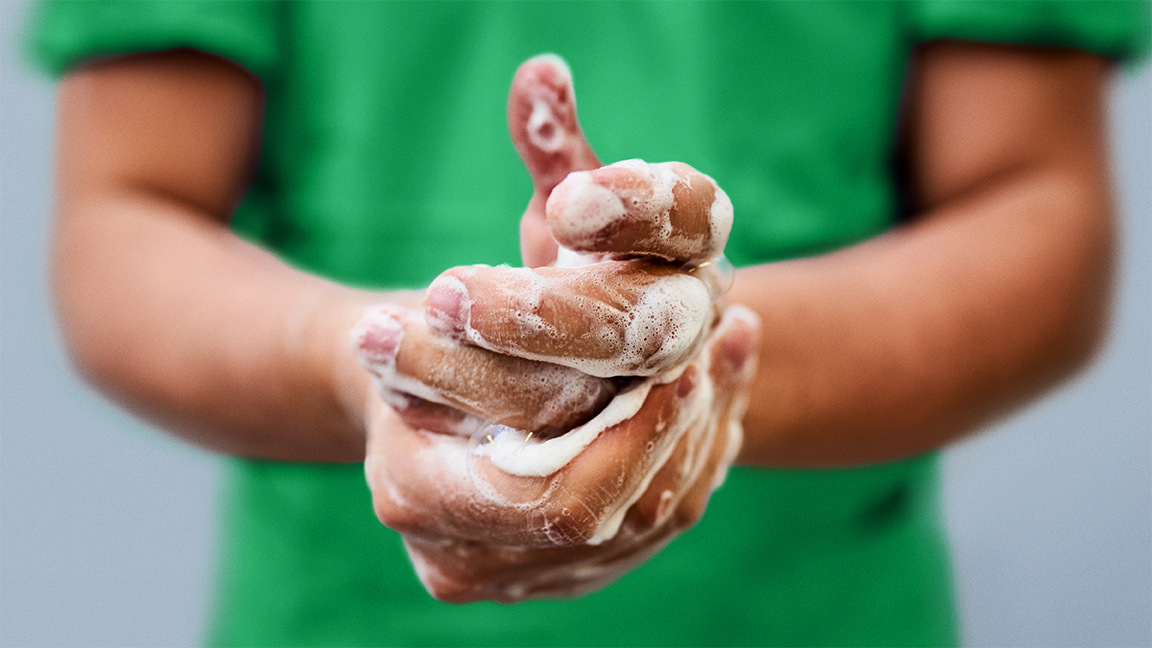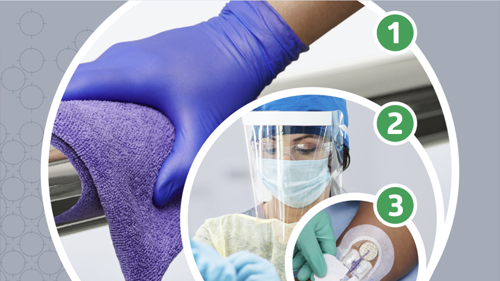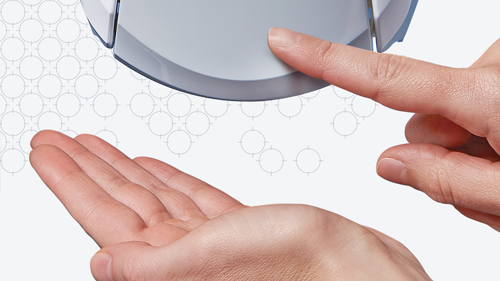Measuring hand hygiene: Steps for observing staff compliance
Learn how to overcome barriers and change behavior.

While chatting with a few of my infection preventionist friends in summer 2020, I found it interesting that everyone observed a similar pattern of behavior: in March and April as the pandemic was hitting, hand hygiene compliance rates (whether measured with direct observation or electronic monitoring) shot up into the 90s, if not hitting 100% routinely. Then, as dealing with COVID-19 became the new abnormal, rates lowered a bit, though they were still much higher than pre-COVID-19 levels. But still, a drop-off.
While not surprising, it begs the question: if COVID-19 doesn’t make us get hand hygiene right, what will? Maybe this is a good time to think again about the measurement and feedback process, ensuring we are including space for barrier and obstacle identification at the unit level. We need to use such insight to drive unit-specific (team-based) behavior change.
Times like these call for constant vigilance and diligence. And that begins with the direct observation of hand hygiene, the standard practice recommended by the World Health Organization to monitor staff compliance.
Unless you’re using an electronic hand hygiene monitoring system, which it is estimated that less than 5% of the US market is doing, you’re using direct observation for a dual purpose—first, for performance measurement; and second, for barrier and obstacle identification.
Here is a quick checklist for each:
Direct observation for performance measurement
These steps are based on the WHO 5 Moments for Hand Hygiene.
- Observation of hand hygiene behavior is accomplished using the WHO Data Collection Tool1 or a modified version, such as was used in the Steed et al “HOW2 Study.”2 Johns Hopkins Medicine also has created a Hopkins Medicine Monitoring Tool.3
- Complete the top part of the header before commencing observation (except end time and duration)
- A session should last no more than 20 minutes.
- Record hand hygiene observations (HHOs) in the appropriate column and fill in the square corresponding to the indications for hand hygiene detected.
- Record hand hygiene events (HHEs) or hand hygiene actions observed or missed for each indication. Consider immediate feedback to any healthcare workers who have “missed” in order to recover and eliminate the practice of seeing misses and allowing care to proceed with unclean hands.
- Glove use may be recorded only when a hand hygiene event is missed while the healthcare worker is wearing gloves.
- At the end of the session, record end time and duration.
- Compile the data. Data from each Observation Form should be entered into a master database such as Excel. Total HHEs for a period are aggregated and divided by the total number of HHOs to determine the Compliance Rate for specific periods of time (week, month, quarter, year) for specific units as well as aggregated for the entire organization.
- Create graphs and reports. Performance graphs and appropriate reports should be created and then shared with unit and organization leadership.
- Give frontline staff feedback against unit-specific goals. Frontline workers should be provided with performance feedback as soon as possible after report creation.
- Celebrate successes when goals are met; stay the course when results fall short.
- Persistently continue the cycle.
Let’s be sure we keep our foot firmly on the gas to retain early COVID-driven gains in all aspects of infection prevention and patient safety.
Direct observation for barrier and obstacle identification
Consider using or adapting The Joint Commission’s Hand Hygiene Targeted Solutions Tool [TST]4 for data capture and overall approach.
- Deploy direct observers to collect a total of 30 missed hand hygiene opportunities per unit.
- Approach staff after missed opportunities are noted, providing verbal feedback and asking the reason for the miss. Capture and cluster the reasons to see which ones are the major obstacles for that unit.
- Conduct mini-focus groups with each unit to review the data, highlight primary obstacles and barriers observed on that unit and agree on unit-based changes (action plan) to eliminate the obstacles and thus increase compliance. Keep it positive and opportunity embracing, not negative or punitive sounding.
- Measure performance after the mini-focus groups and action plan implementation using the direct observation steps above, or your electronic system if you have one in place, to track progress against goals and give feedback to the units.
- Celebrate successes when goals are met; stay the course when results fall short.
- Persistently continue the cycle.
This approach has been shown to drive statistically significant improvement. Kelly et al, 20165 achieved aggregate performance increase on four test units of 23.5% within six months. A three- to four-unit, four- to six-month pilot will help you see if it works for your organization.
Data from direct observation may be overstated. But if collected consistently, it should provide a sound tool for measuring baseline plus real improvement, along with the impact of initiatives designed to drive sustainable growth in hand hygiene behavior. Let’s be sure we keep our foot firmly on the gas to retain early COVID-driven gains in all aspects of infection prevention and patient safety.

VP Patient Safety Innovation for Medline Industries, LP
Paul invented the first electronic hand hygiene monitoring system designed to improve hand hygiene performance while reducing infections and costs. He is an innovative and mission-driven leader with more than 35 years of experience in hand hygiene and patient safety solutions. Paul also shared hand hygiene insights as a past contributor to Healthcare Hygiene Magazine.
Disclosure: Medline was a 2021 member of the Leapfrog Partners Advisory Committee and has a collaborative relationship with a company that offers electronic hand hygiene monitoring services.
References:
- WHO Hand Hygiene Data Collection Tool. Available at: https://www.who.int/teams/integrated-health-services/infection-prevention-control/hand-hygiene/monitoring-tools. Accessed January 17, 2022.
- Steed C, et al. (2011). Hospital hand hygiene opportunities: Where and when (HOW2)? The HOW2 Benchmark Study. Am J Infect Control. 39(1), 19–26. doi:10.1016/j.ajic.2010.10.007
- https://www.hopkinsmedicine.org/heic/infection_surveillance/hand_hygiene.html. Accessed January 17, 2022.
- https://www.centerfortransforminghealthcare.org/products-and-services/targeted-solutions-tool/. Accessed January 17, 2022.
- Kelly W, et al. (2016) Use of the Targeted Solutions Tool and Electronic Monitoring to Improve Hand Hygiene Compliance. Paper presented at the 2016 SHEA meeting.




